This course takes you around Akasaka-juku and along the Nakasendo Road to Tarui-juku. Although there are no major tourist attractions, it is easy to see that this area is a combination of ancient, medieval, and early modern times.
Although the Nakasendo along this route is not a main road, it is all roadway, and you will walk on paved roads. The first half of the route, starting from Mino Akasaka Station, has many historical sites, such as Okayama, where Tokugawa Ieyasu encamped the day before the Battle of Sekigahara. The area near Tarui-juku has no notable historical sites, and there is a section where you just keep walking. It can be a bit boring. Once inside Tarui-juku, there are many more historical sites.
Throughout the course, in addition to historic sites along the Nakasendo, you can see historic sites from the Tozan Road period and several fine ancient tombs.
Course Highlights
From the Mino Akasaka-juku on the Nakasendo Highway, we will first head south. You can see a low mountain to the south of Minoakasaka Station, which is Okayama.
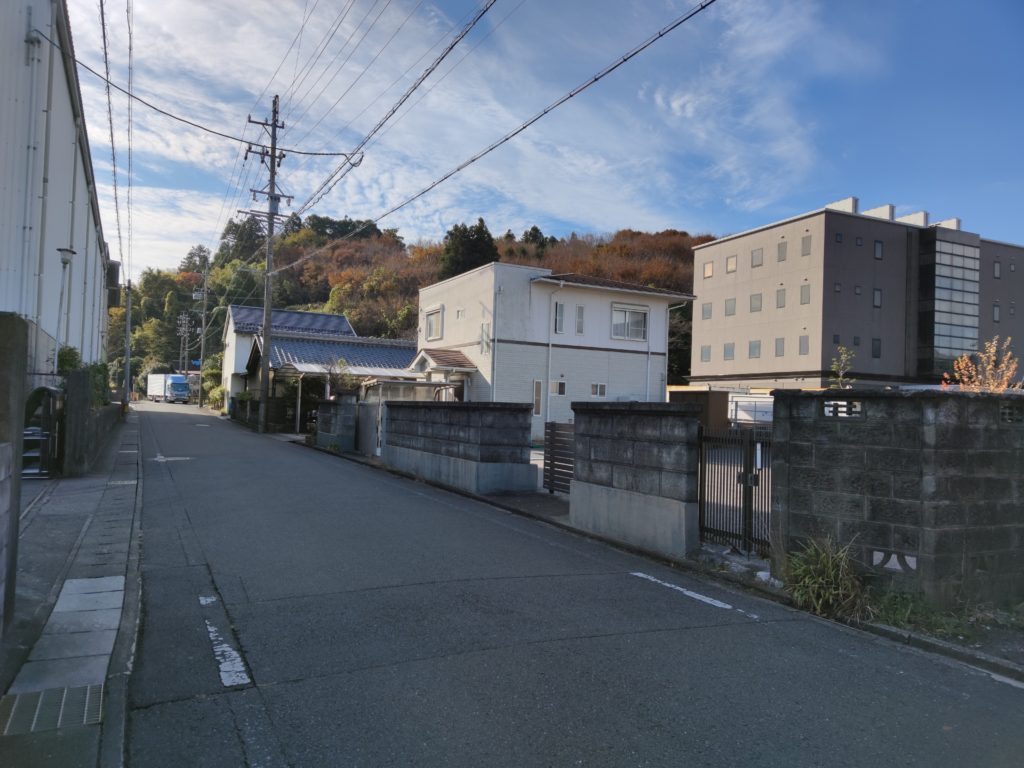
The temple at the foot of Okayama is Anrakuji Temple.
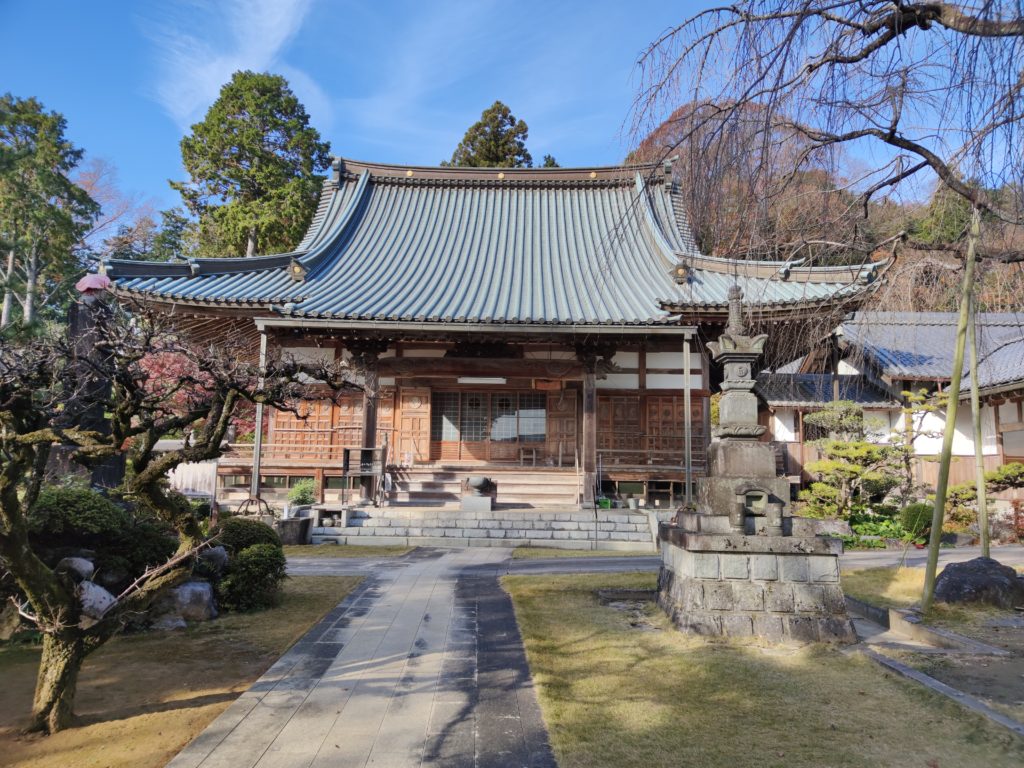
Anrakuji Temple is a historic temple and was founded by Prince Shotoku in 593 with Eimei Hoin as its founder. During the Jinshin War, the temple prayed for the victory of Prince Oama. In the Muromachi period, Toki Shigeyori, a feudal lord of Mino, once stayed at Anrakuji Temple when he protected Ashikaga Yoshimi, the general of the Western Army in the Onin War.
In 1600, during the Battle of Sekigahara, Tokugawa Ieyasu took up a position in Okayama, not far from Ogaki Castle and with a good view, before entering Sekigahara.
The tomb of Toda Gonzaemon, who negotiated with Oishi Kuranosuke as an envoy from the Shogunate during the Edo period when Ako Castle was confiscated from the domain of Asano Takuminokami, who had committed a murder in the pine hallway of Edo Castle.
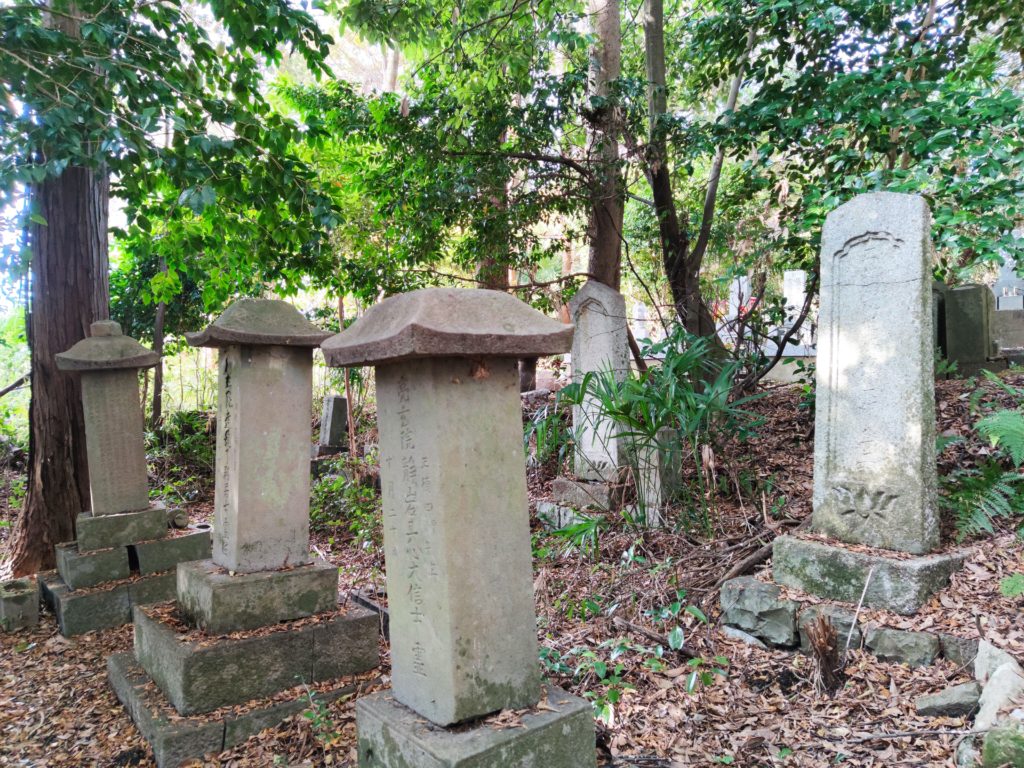
To reach the top of Okayama, follow the path leading up from this cemetery. Soon you will reach the flat top of Okayama. This is the site of the main camp of Okayama. The view is not good. There was an anti-aircraft base here during World War II. The only indication that this was Tokugawa Ieyasu’s camp is a stone pillar with “Okayama Main Camp Site” written on it. Tokugawa Ieyasu is said to have watched from here the Battle of Kuisegawa, a prelude to the Battle of Sekigahara (in which the Eastern Army was defeated).
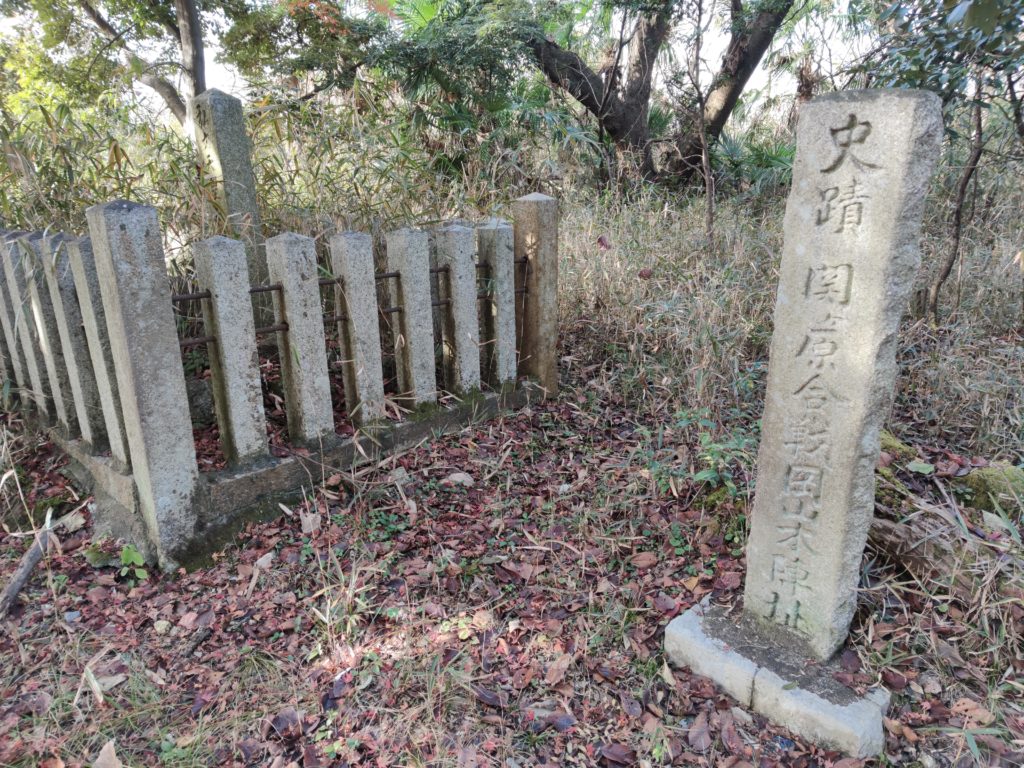
Tokugawa Ieyasu left his headquarters in Okayama the next day and moved his headquarters to Mount Momokubari-yama in Sekigahara, where the Battle of Sekigahara began.
From the top of Okayama, follow a narrow roadway like a work road, passing through a cemetery along the way in the direction of Mino Akasaka-juku. Along the way are the ruins of a teahouse mansion. The Ochaya Yashiki was built in 1605 by Tokugawa Ieyasu to serve as a place to stay when he traveled to Kyoto. Tokugawa Ieyasu and Tokugawa Hidetada stayed here. It is now a private property, but is open to the public as a garden. Some of the earthen mounds and other structures still remain. It is said that it was abolished later when the Nakasendo road was developed and the main camp was built.

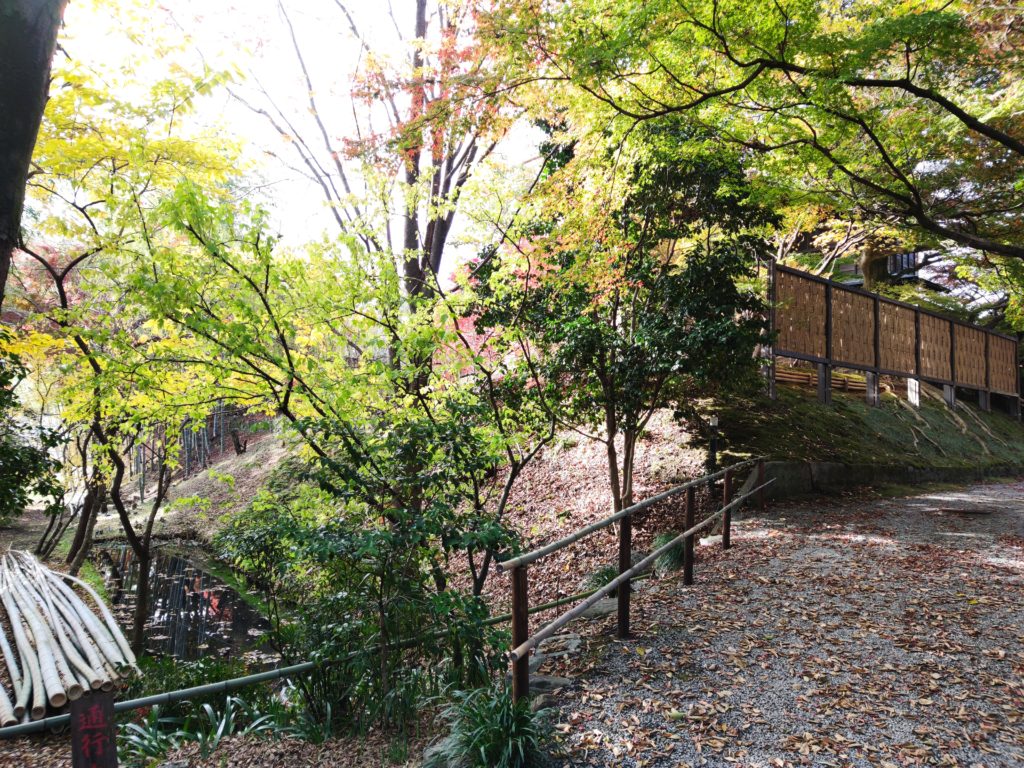
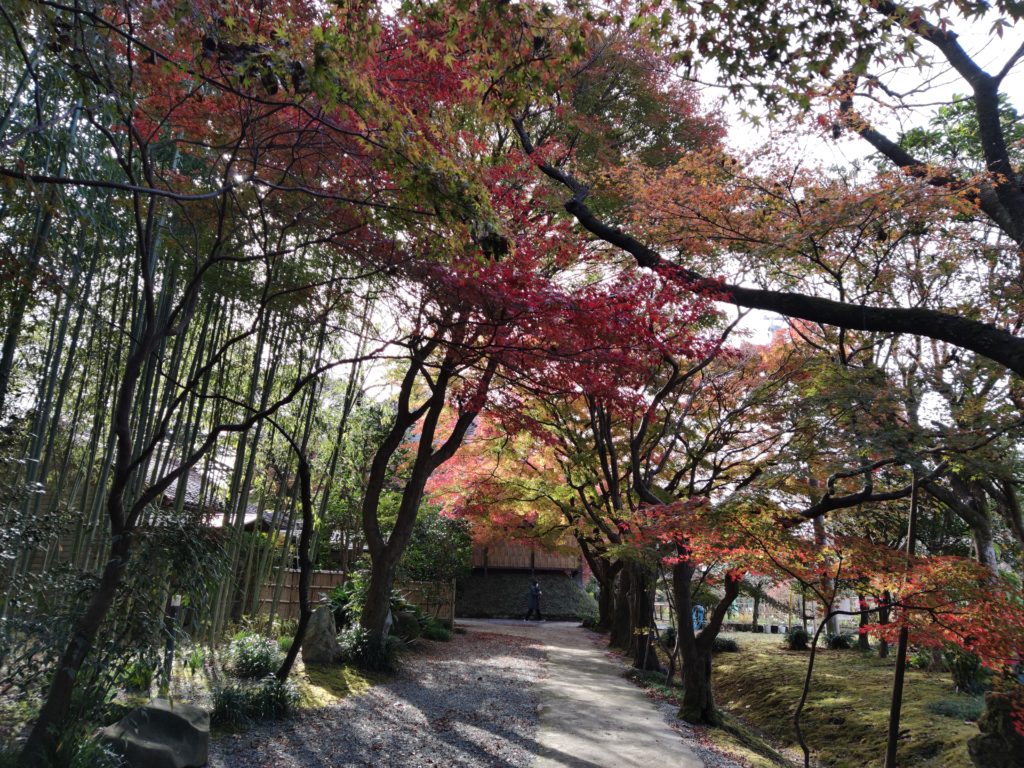

A monument at the site of the Akasaka-juku Honjin (main inn). There is a monument to Princess Kazunomiya, who married into the Tokugawa family at the end of the Edo period, and she stayed at Akasaka-juku.

The next stop is the Akasaka Port Ruins at the eastern end of Akasaka-juku. Although it is now a park, this was the main channel of the Ibigawa River until around 1530. The port was used until the Meiji era.

Walking back west through the Akasaka-juku. It is not quite as it used to be, but the Yabashi family residence is well-preserved. The main house is believed to have been built in 1833. It retains the characteristics of a large local townhouse from the late Edo period. It is a registered national tangible cultural property, but it is privately owned and the inside is not open to the public.
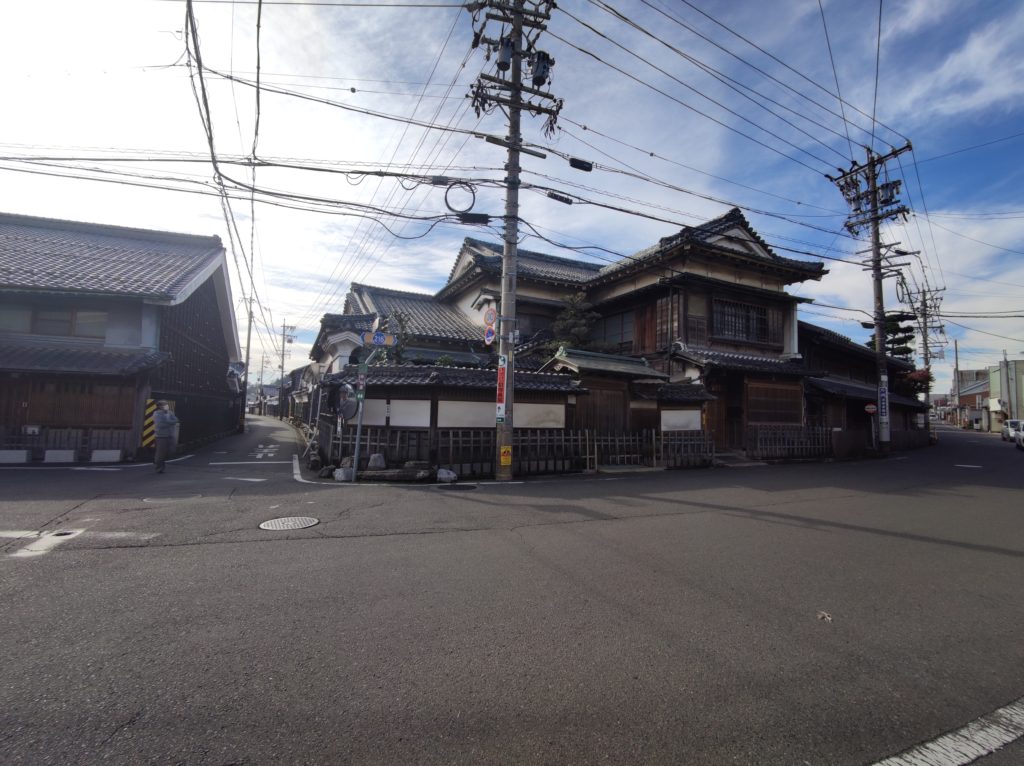
Passing by the wakihonjin with only a signboard, a small hill on the south side of the road is Kabuto-zuka (helmet mound). Originally a round mound kofun (ancient tomb), it is said that Noisshiki Tanomo, a general who was killed by the western army in the Battle of Kuisegawa, was buried here with his armor.
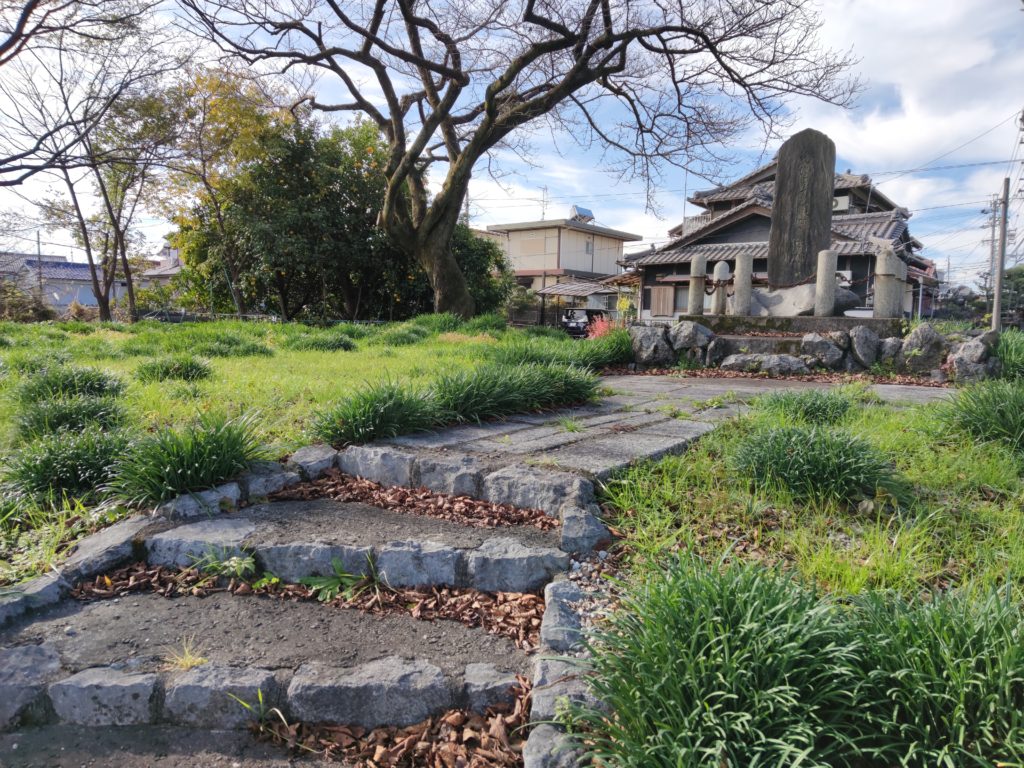
Past Kabutozuka, turn off the Nakasendo Road and enter the south side of the road. Beyond this point is the Hirui Otsuka burial mound, which is designated as a national historic site. This is a large keyhole-shaped tomb mound. It is the largest keyhole-shaped mound in Gifu Prefecture, with a length of 150 m. It is not a very well-known burial mound, but its size is surprising.
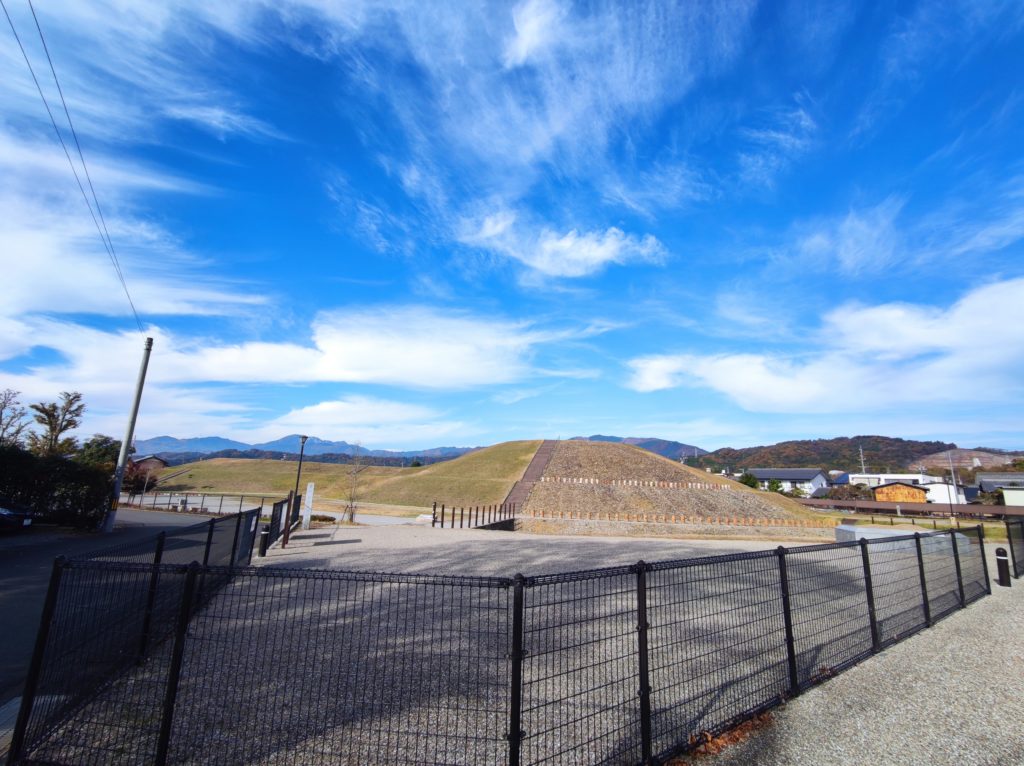
Returning to Nakasendo and heading west is Nyoraiji Temple. It is said that Honda Zenko, who walked from Namba in Osaka to Shinshu carrying a statue of Amida Nyorai on his back during the Asuka Period, stopped here.
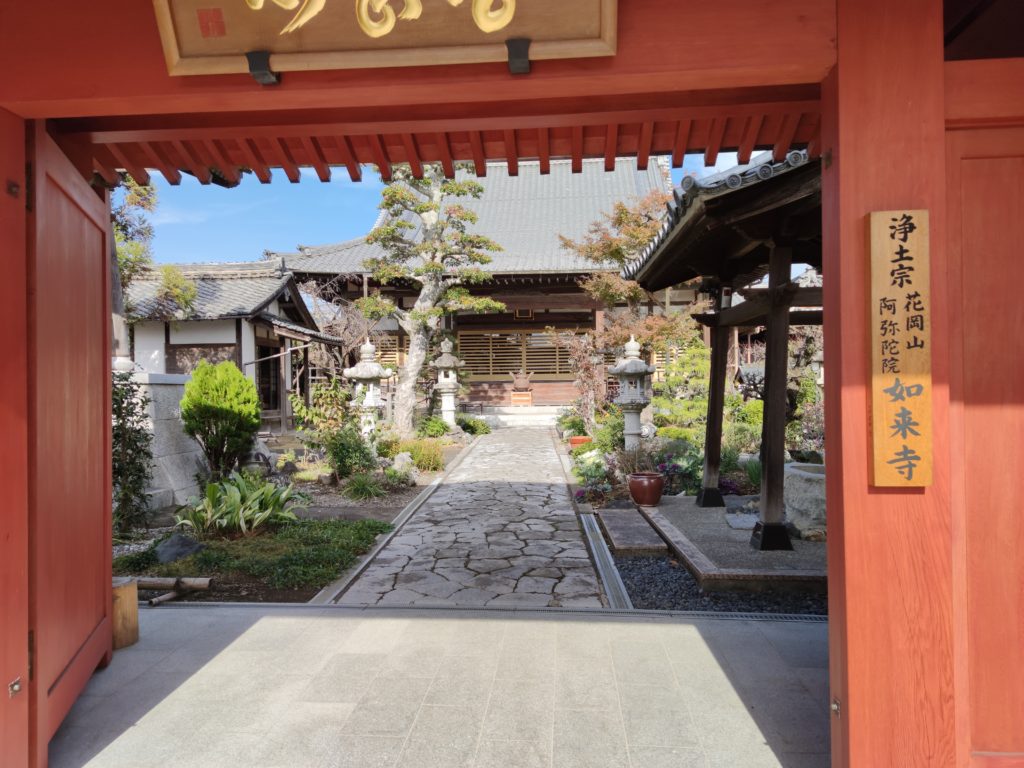
After passing the elevated JR Shin-Tarui line, you will come to the town of Aohaka. The name “AOHAKA” was originally derived from the name “OHAKA”, which means large ancient burial mounds.
In the Tozan Road and Kamakura Kaido Periods, Aohaka was a post town. And there used to be a big entertainment district with prostitutes and entertainers.

There is also a large burial mound in Aohaka, called the Konukayama burial mound. The length of the burial mound is 100 meters. The upper part of the mound is now a community cemetery.
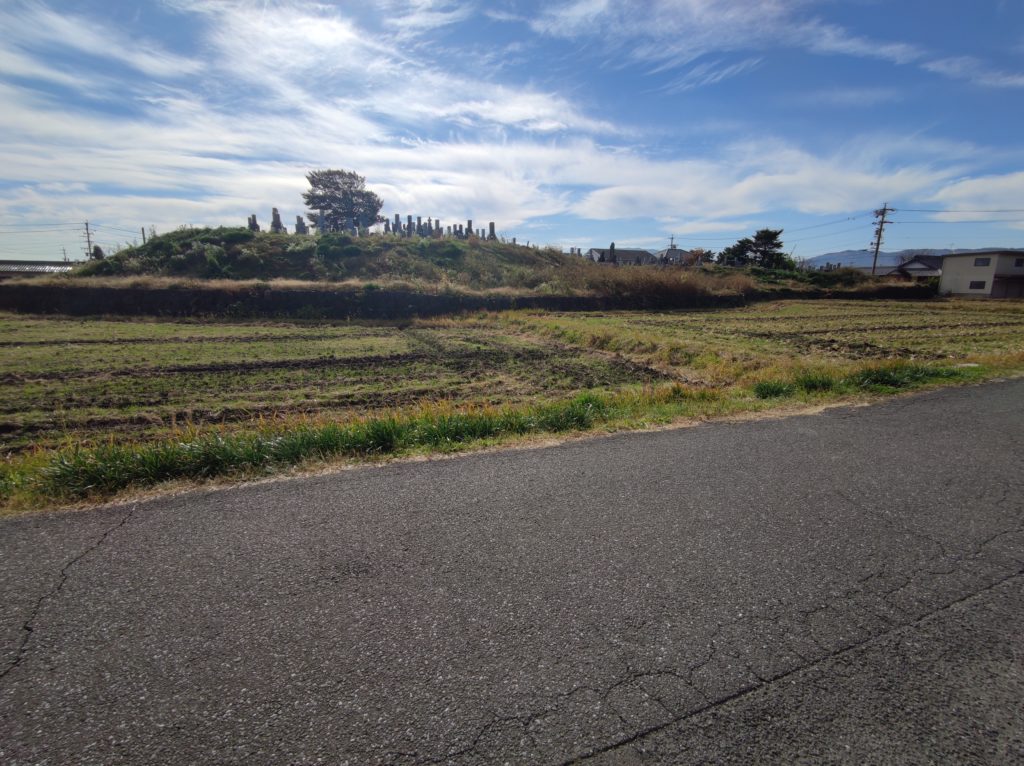
Shirahige Shrine is located near Aohaka Elementary School. The main deity is Sarutahiko Ookami. The shrine pavilions are elaborately decorated. The “Aohaka Dram Dance,” which has been designated an important intangible cultural asset by Ogaki City, is dedicated here during the October festival.
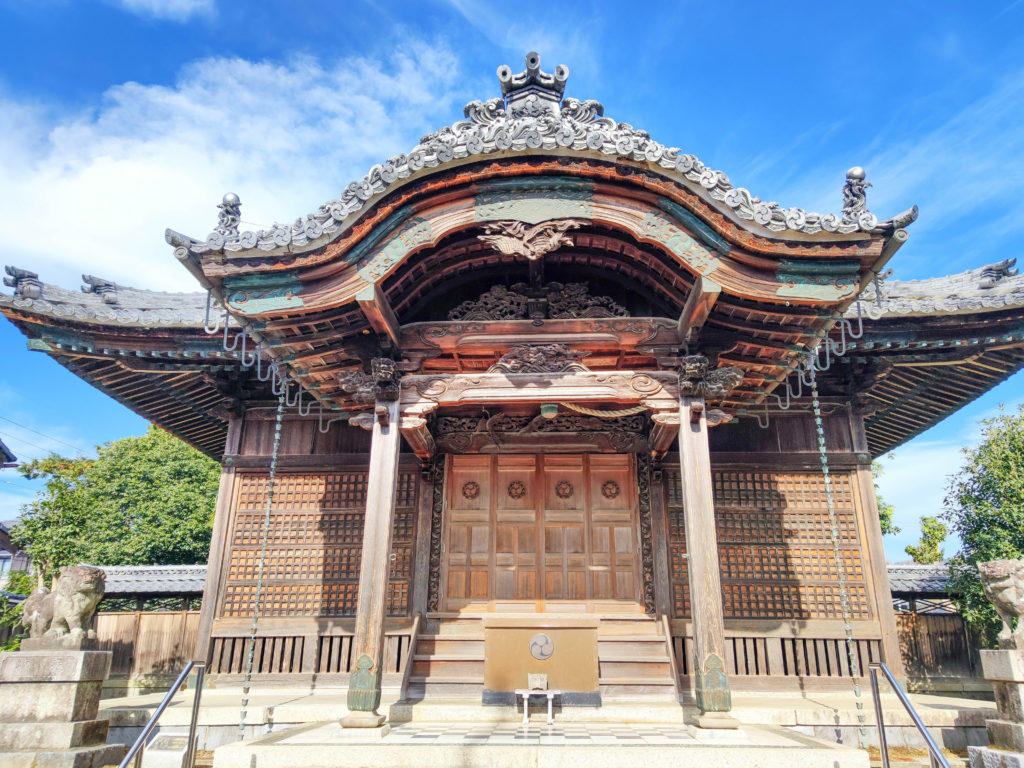
A short distance west is Yoshitakean (Yoshitake hermitage).

There is a legend of Minamoto no Yoshitsune here.
Adjacent to the Yoshitake-an monument is Koshinodake-no-tsuka (小篠竹の塚). The signboard says something like, “This may be the grave of Terutehime,” as a quote from Kiso Meisho Ezu.
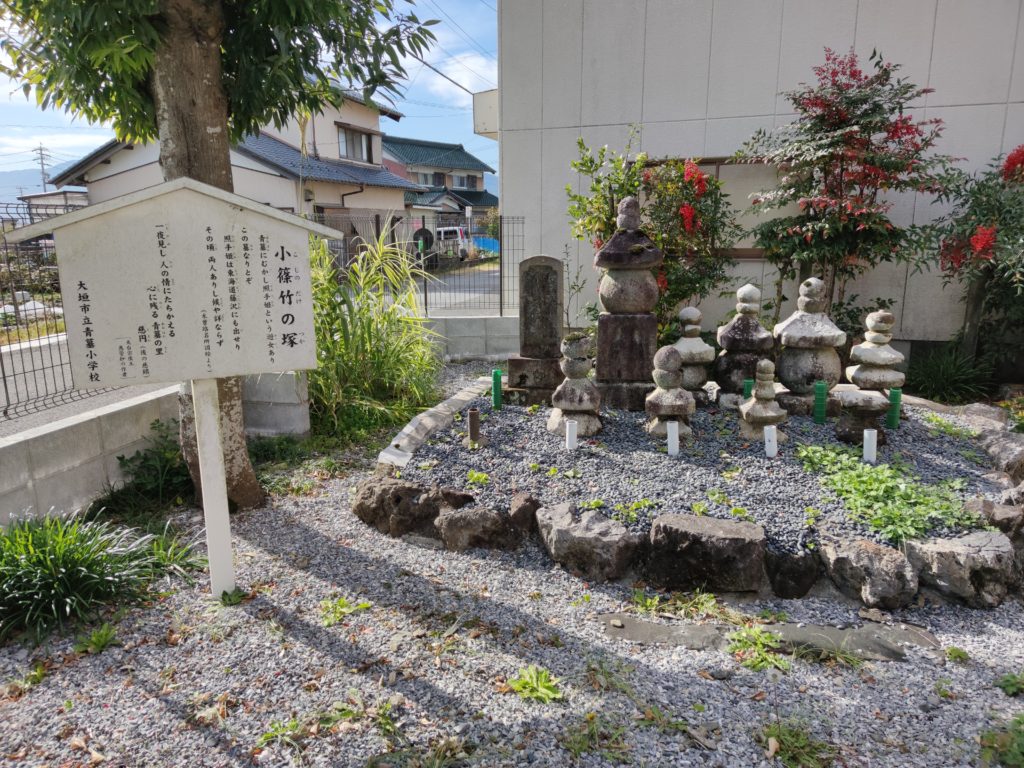
The road ahead soon crosses the prefectural road and there is one convenience store. This area is Aono. To the north of Aono are the ruins of the Mino Kokubunji Temple. If you have time, drop by there.
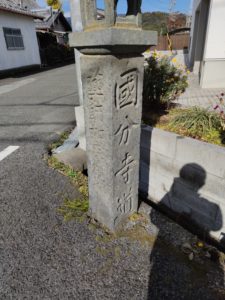
Further on is the site of Aono Ichirizuka. No mound remains.
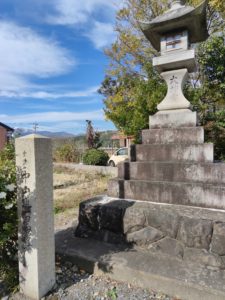
From this area, suburban shopping centers and other facilities have emerged around the area, indicating that the area has entered Tarui Town, the center of the population.
And Tarui Oiwake before the river. This is the junction between the Mino Road and the Nakasendo Road.

Crossing the Aikawa River, you will arrive at Tarui -juku. The Aikawa River is a raging river. And in the past, no bridges were built over it, and ferry crossings were done by human trespassers. The eastern part of Tarui Inn was also located in this area.
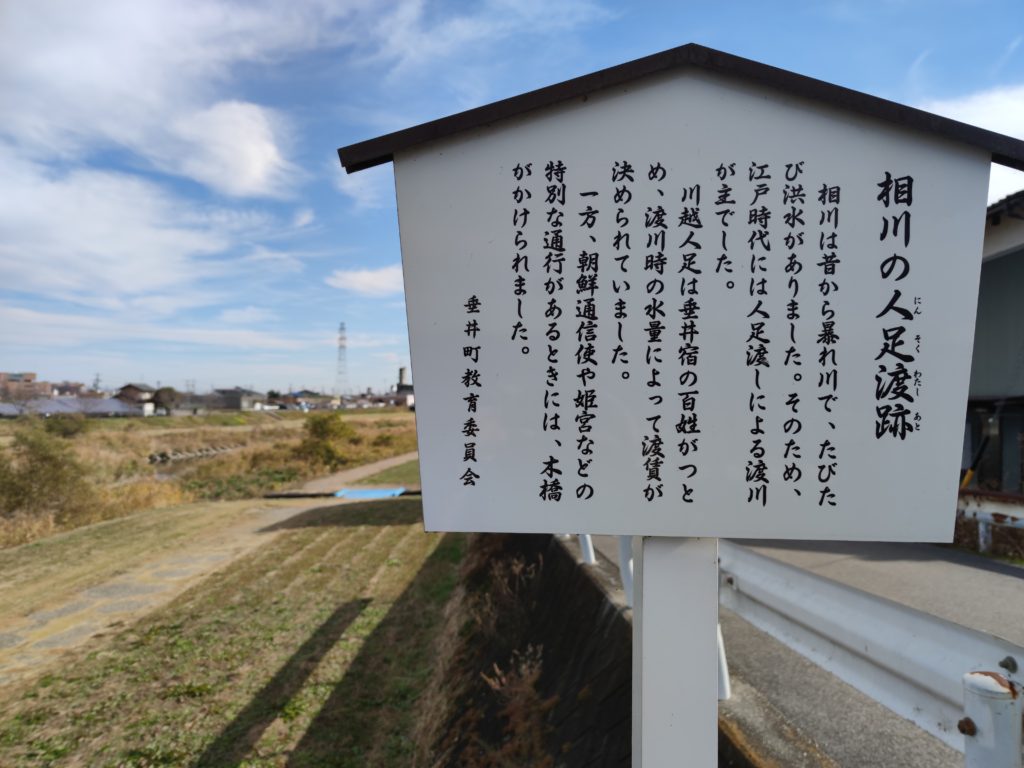
Back on the Nakasendo and continuing through the post town, you will find the Ryokan Kamemaruya. It is still in business as an inn.
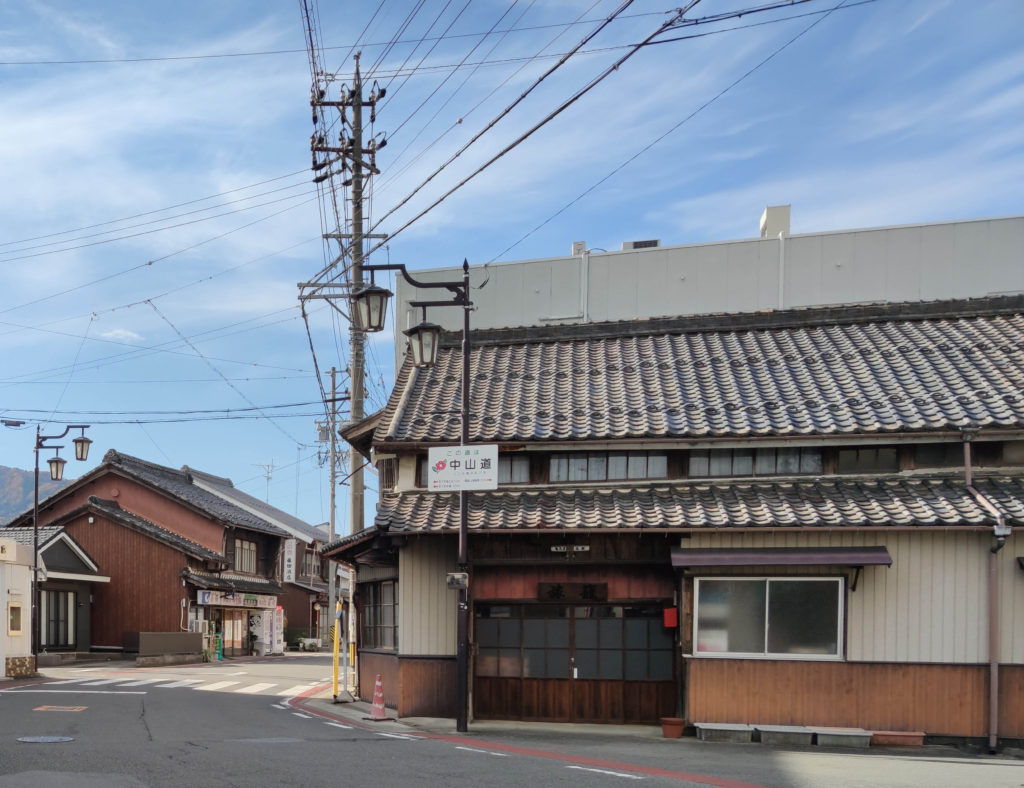
Further along Tarui-juku, a stone torii gate appears. This is the stone torii gate of Nangu-taisha Shrine, an important cultural property of Japan. Nangu-taisha Shrine, which was burnt down in the Battle of Sekigahara, was rebuilt in 1642 with donations from Tokugawa Iemitsu, and this gate was built at that time.
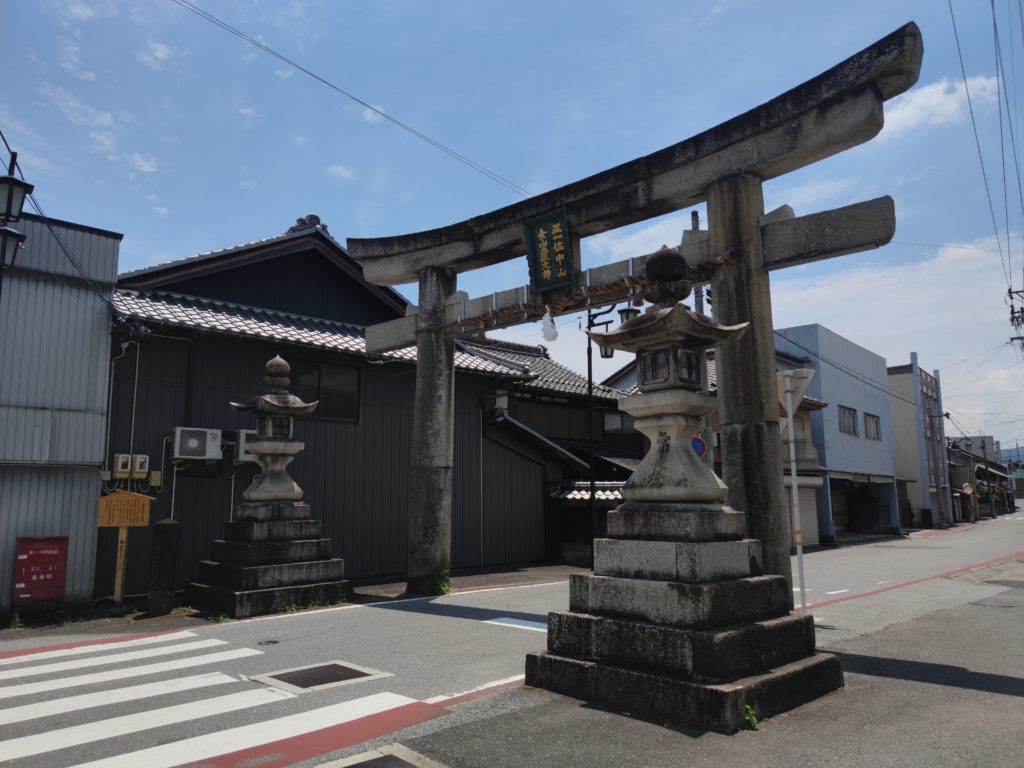
Then, an old private house on the south side of the road is the Kobayashi Family Residence. This townhouse has remained from the late Edo period.
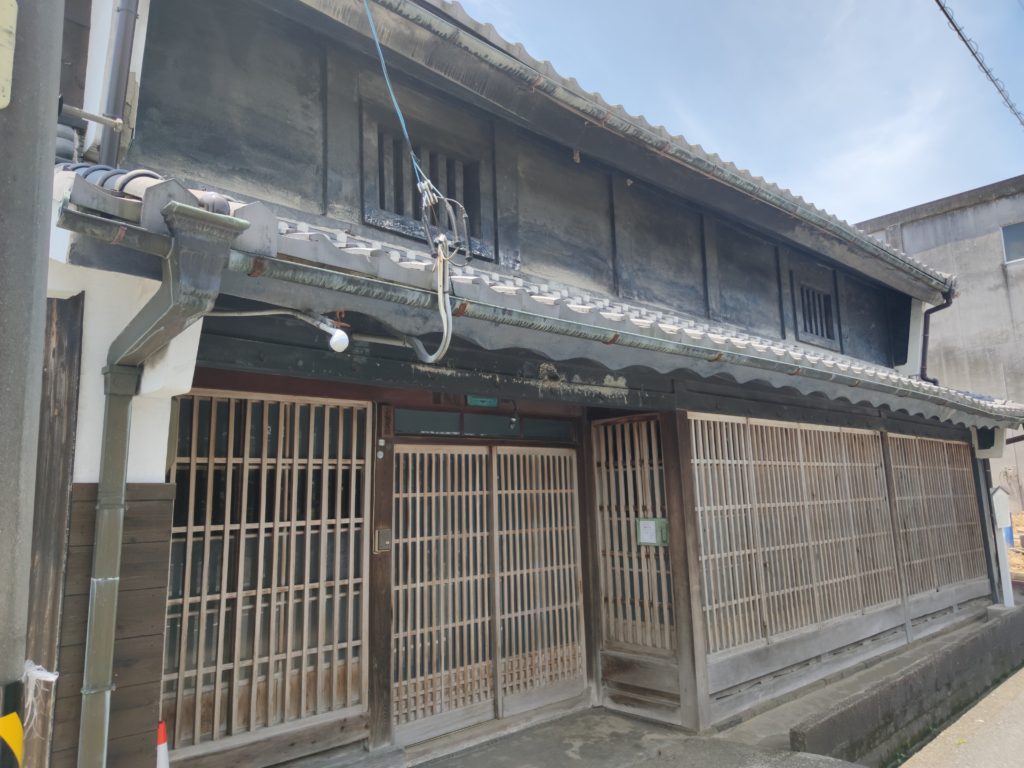
Eventually it became Honryuji Temple, a temple of the Otani sect of Jodo Shinshu. The origin of the temple is unknown. Honryuji Temple is where Matsuo Basho stayed for a winter in the 4th year of Genroku (1691).
The entrance to the shoin and the temple gate were moved from the waki honjin of Tarui-Juku, and a sign post has been restored in front of the temple gate.
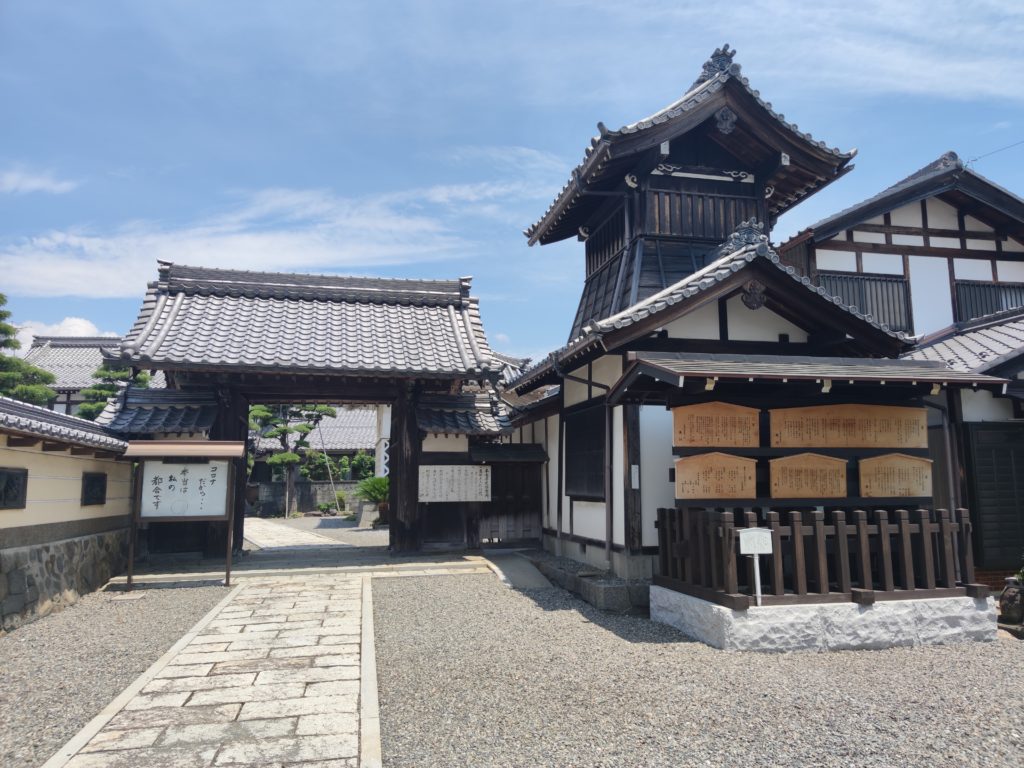
Eventually, you will see a signboard for the western end of the Tarui-juku, around where Atago Shrine is located. This is the western end of Tarui-juku.
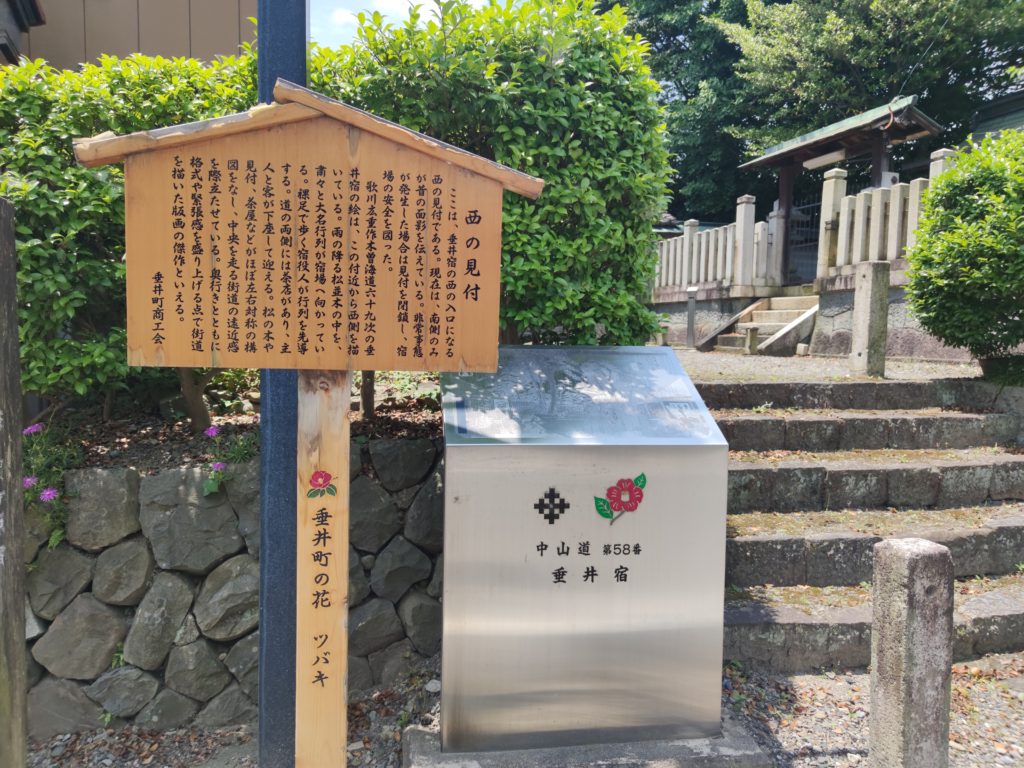
Tarui Spring has been known since ancient times, and some say that the name Tarui is derived from this spring.
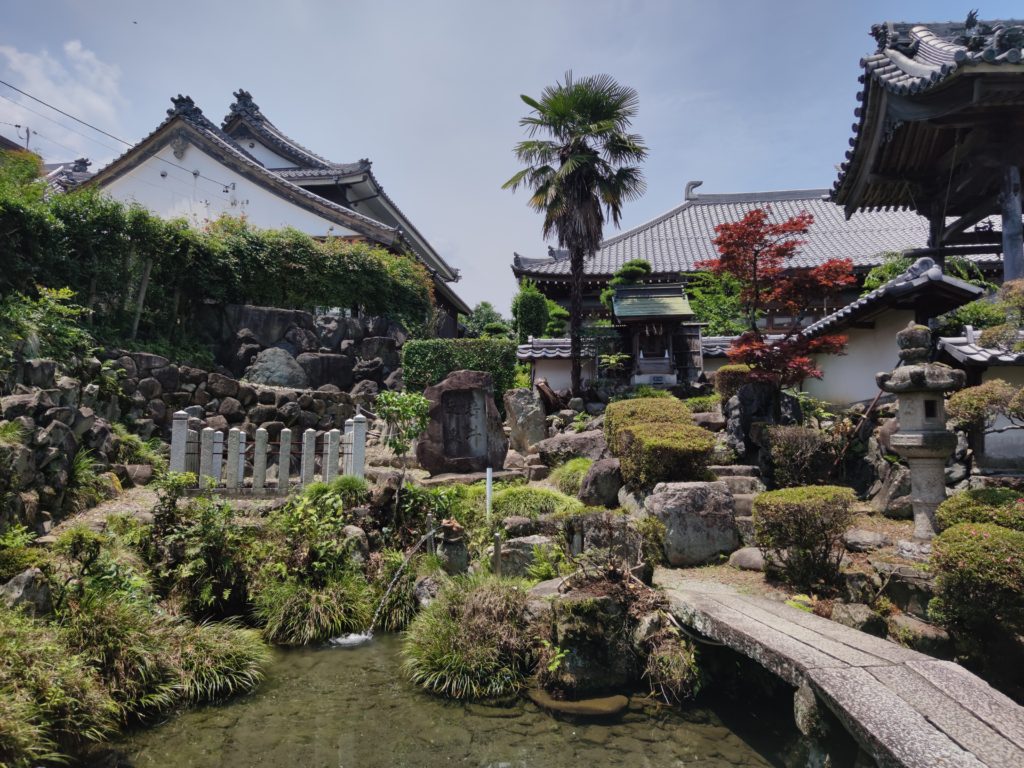
Starting point
It is best to start walking from JR Mino Akasaka Station near Akasaka-juku.
Course time
This course takes about 3 hours. All walking is on paved paths.
Lunch
There are no restaurants in the vicinity of Akasaka-juku.
Tarui-juku has several restaurants around the station. At the time of this course visit, we went into Issho, a tavern and set meal restaurant. It is not a restaurant that usually caters to tourists, but it seems to be popular among the locals.
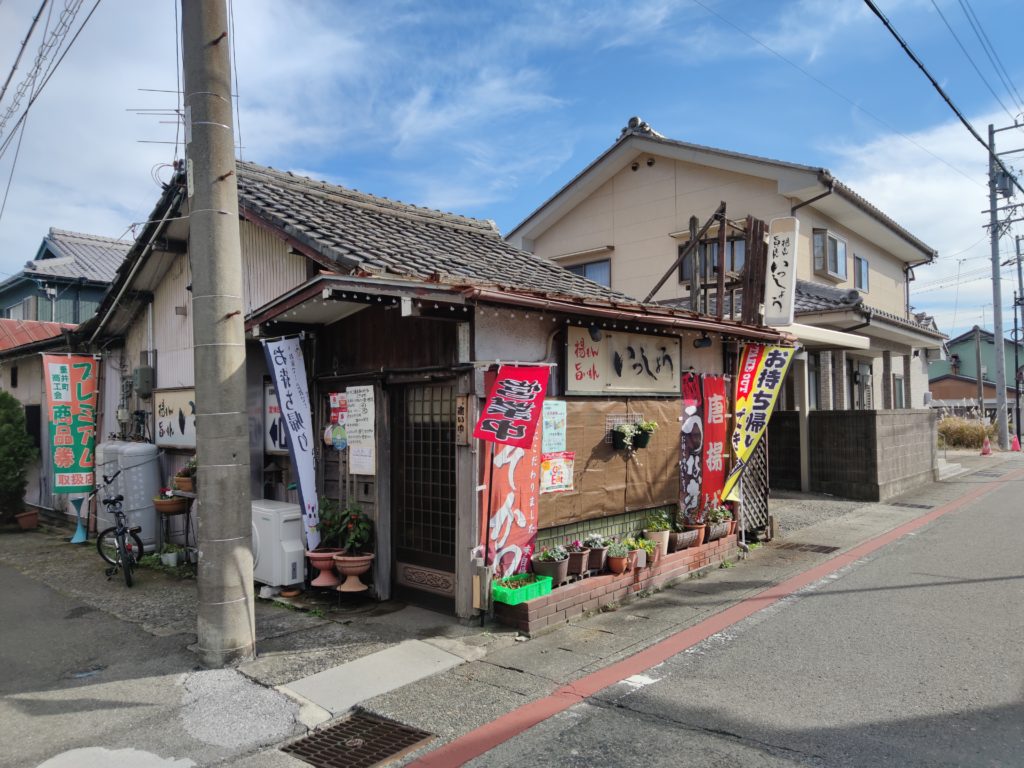
Toilet
There are public restrooms in parks along the way. There is also a convenience store near Tarui.
What to bring and wear
You can wear street clothes. Sneakers are recommended.
ideal time for hiking
It can be visited all year round, but it is best to avoid the hot summer months and when there is snowfall.
Neighborhood Attractions
Since the course from Mino Akasaka-juku to Tarui-juku can be walked in half a day, those who are confident in their legs can walk from Tarui-juku to Sekigahara-juku.
Tarui is also home to the Nangu Taisha shrine, which is also a good place to visit.From Nangu Taisha you can also climb a mountain called Nangusan.
Comments
One response to “Akasaka-juku – Tarui-juku hiking”
[…] English version here […]